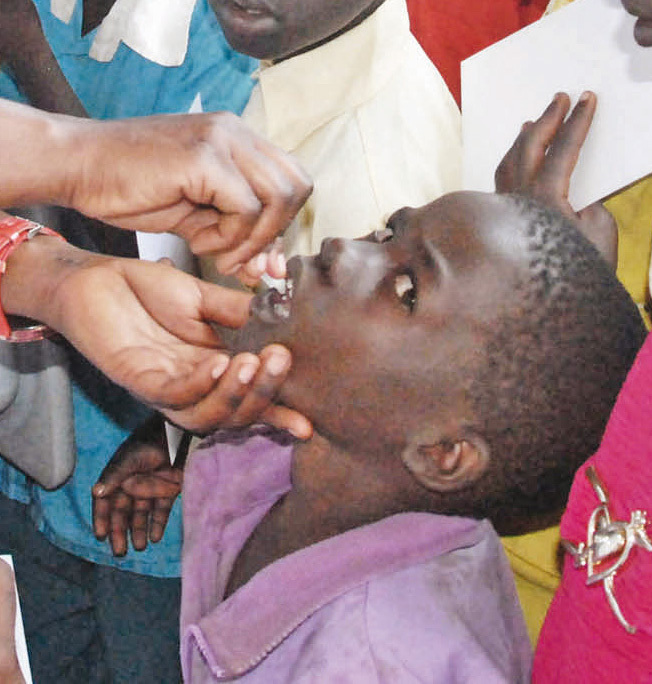What if Mary was Ugandan
But what if Mary was a woman from rural Uganda giving birth this Christmas? That means Jesus would be a Ugandan and a voter in 2037. He would become one of the 17 million babies born annually in Uganda.
CHRISTMAS
Although Jesus' birth was foretold by the prophets hundreds of years earlier, it is ironical that there was no special room prepared for His delivery.
Jesus was born in a cattle shed and laid in a manger.
That would not be acceptable even in rural Uganda today. No woman, not even a stranger, would be allowed to deliver in such a filthy place due to humanitarian concerns.
Society also knows that chances of a baby or mother surviving in such an environment would be minimal.
Even medically, a newborn is so vulnerable to infections (sepsis) that such a place would be dangerous as it is likely to be littered with lethal germs. But, alas, there is no record that Christ suffered any infection throughout his childhood. Could it be because He was God?
But what if Mary was a woman from rural Uganda giving birth this Christmas? That means Jesus would be a Ugandan and a voter in 2037. He would become one of the 17 million babies born annually in Uganda.
Jesus would probably not survive his first month of life due to the poor conditions surrounding his birth. He would become one of the unfortunate 45,000 newborn babies, who die in their first month and are forgotten in the books of statistics at the health ministry.
Being rural and unimportant, no government official would attend his burial and, although speeches would hint at what a useful Ugandan he could have been, everyone would take it as a matter of fact that babies usually die.
There would be no uprising that a baby has died when he could have been saved because Ugandans are used to these things.
However, there are chances of his survival beyond his first month of life.

There are chances that Jesus would not have lived to see his fifth birthday
According to the Uganda Demographic Health Survey report 2016, the chances that Jesus would live to celebrate his fifth birthday are 64 per 1,000 live births.
This means that 6.4% of the 45,000 newborns today will die before celebrating their fifth birthday.
For Jesus to survive or die would depend on where his father, Joseph, hails from. If he was from the three sub-regions of Karamoja, Busoga and Bunyoro, chances of celebrating his fifth birthday would be slim.
In Busoga and Bunyoro, the number of children aged below five, who die every year, stands at 84 out of 1,000 babies who are born alive.
It would be worse in Karamoja because the sub-region loses about 108 children out of 1,000 annually.
The situation is equally dire in other sub-regions, such as Toro and West Nile, which are listed among the poorly performing sub-regions as far as under-five mortality is concerned.
Jesus can survive, but develop nutrition-related deficiency conditions, such as stunting and Kwashiorkor?
In Uganda, stunting stands at 29% and severe stunting at 9%. Stunting is where children below five years are short for their age.
In Uganda, stunting is much higher among male children at 31% than female children at 27%. And that is not good news for Jesus. He would be even more disadvantaged because stunting is greater among children in rural areas at 30% than urban areas at 24%.
ORIGIN
Let us imagine that his parents were from rural Wakiso, Mukono, Buikwe, Mpigi or Luwero districts, where stunting is lower. His mother, Mary, would not be much luckier.
Chances of death or survival would depend on where she would go to seek antenatal or delivery services.
For instance, if Mary went to deliver in a poorly equipped health facility, her chances of survival would be greatly reduced than if she delivered in a private facility in an urban area.
She would not probably choose elective caesarean, which is now popular among the elites.
Her husband, Joseph, being from a humble background, scratching a living off carpentry, would have ended up taking her to a government hospital or health centre.
Currently, the maternal mortality rate stands at 336 per 100,000 live births.
This translates into 16 mothers dying every day due to preventable causes. It is not clear if Mary was delivered by a professional attendant, but probably not, because only Joseph and, perhaps, the person who led them to the cattle shed in Bethlehem, were available.
Data indicates that the number of women delivering in health centres under skilled birth attendance has increased, currently standing at 74%.
However, Mary would definitely not be part of the statistics. She would be classified among the 26% women who deliver with the assistance of a traditional birth attendant.
Immunisation
How about Jesus' immunisation?
Jesus certainly missed his vaccinations including the ones of BCG and Polio zero at birth. In a cowshed, those luxuries are not easy to come by. BCG is needed by babies to get measurable protection against tuberculosis and Polio.
Without it, Jesus would remain at risk of contracting TB as he mingled with people during his childhood.
But if he was a Ugandan, chances are high that he would have gotten BCG and Polio zero because the national immunization indicators show that about 90% of babies born in Uganda now receive the immunisation.
This includes mothers who never give birth in hospitals and instead deliver at home or by the roadside on their way to health facilities.
There are lots of campaigns that eventually get all women to take their babies for immunisation. Mary would have certainly not been left out.

A child being immunised